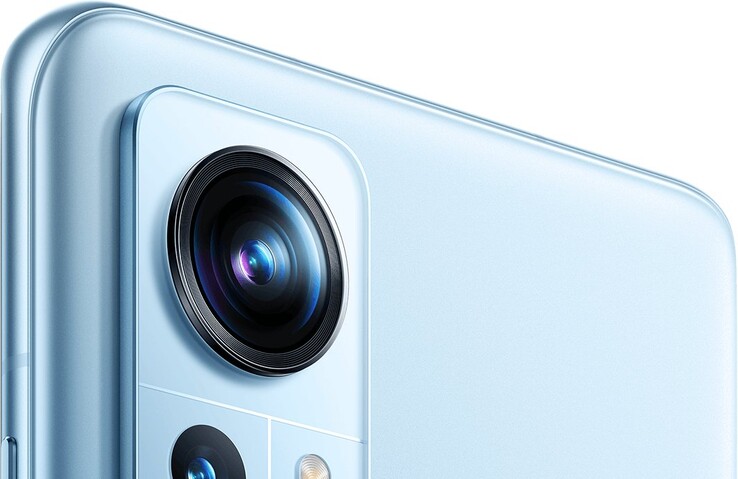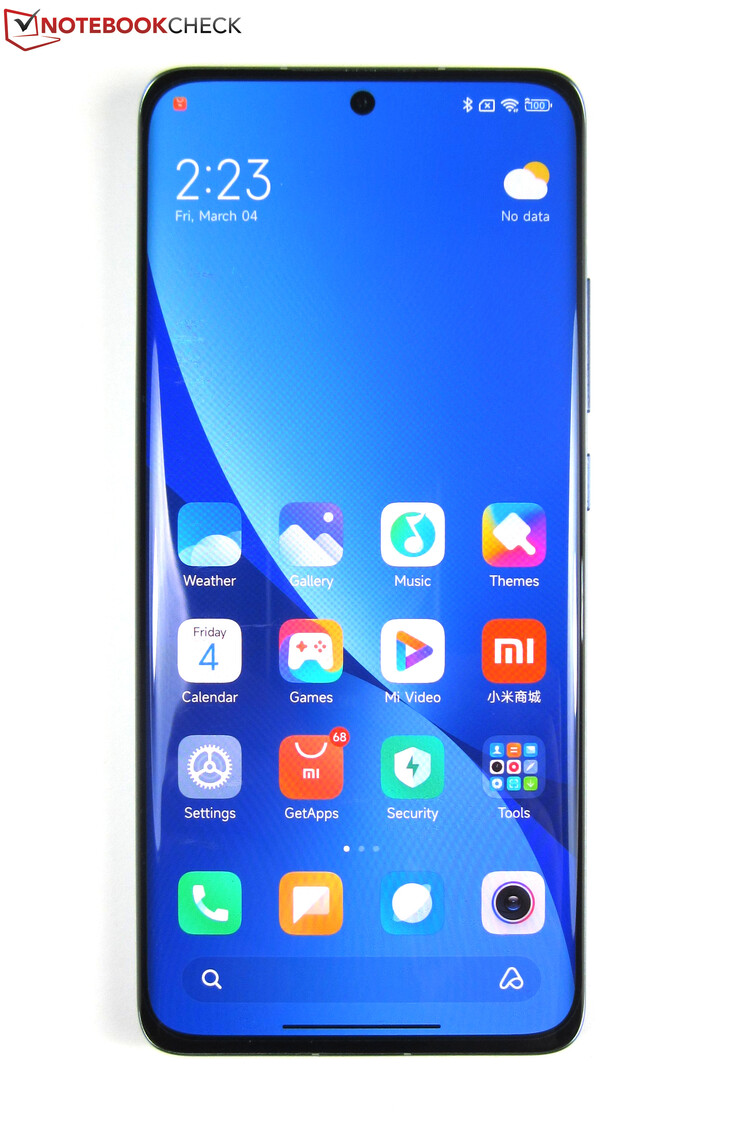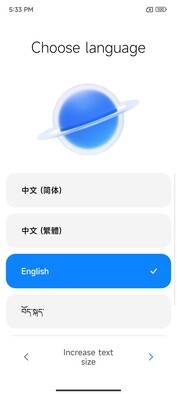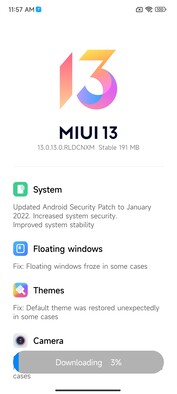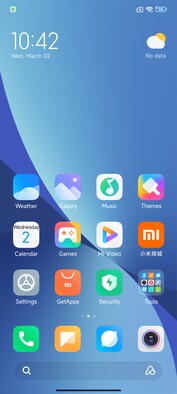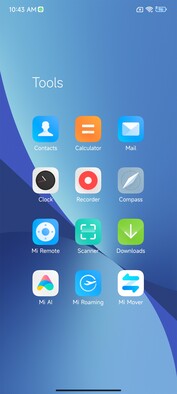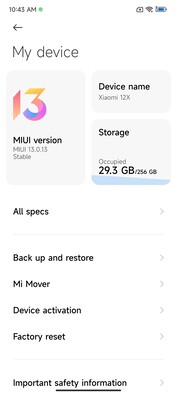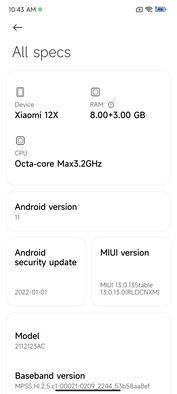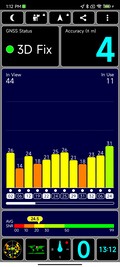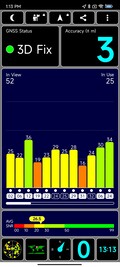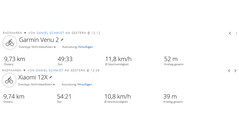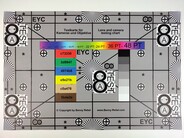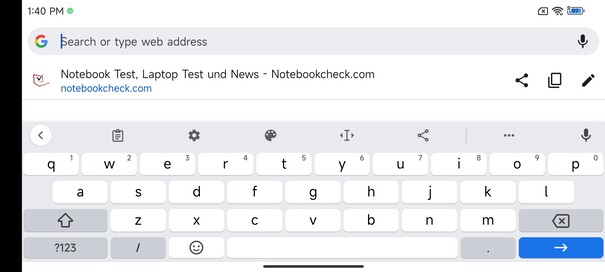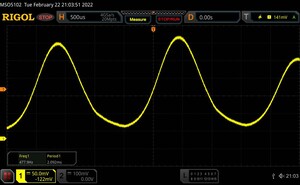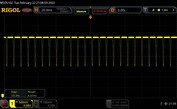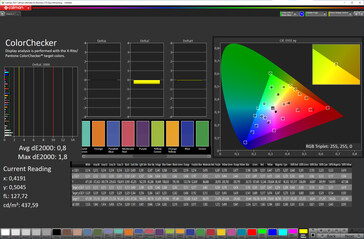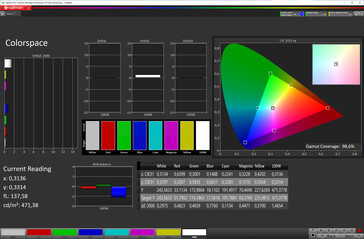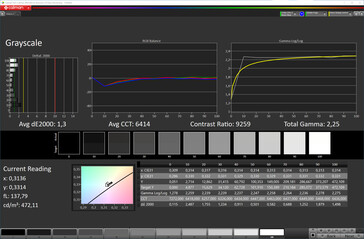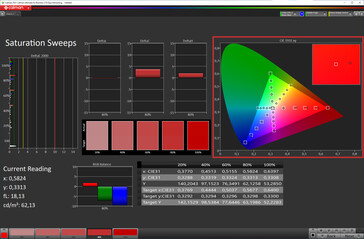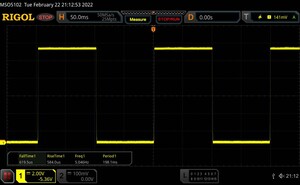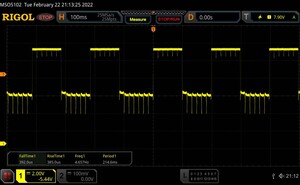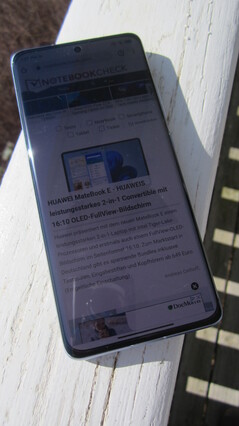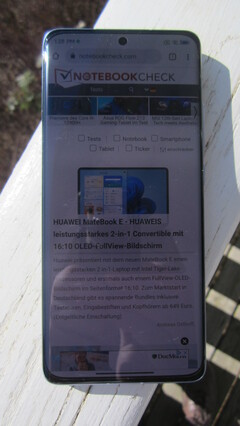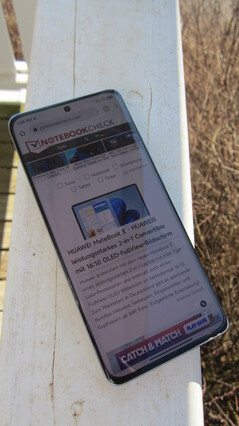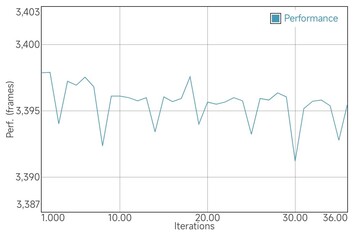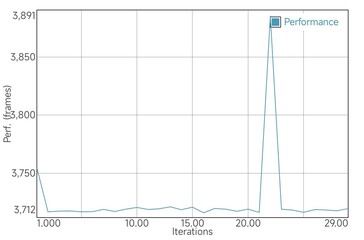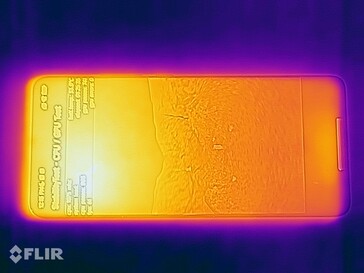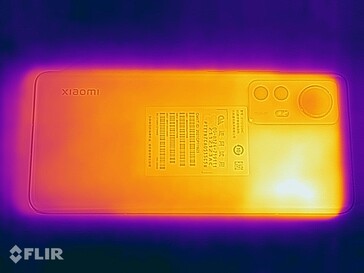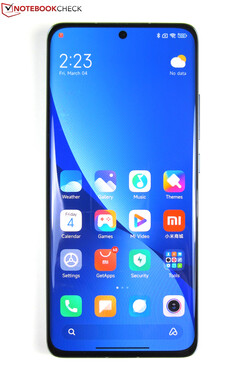Xiaomi 12X Smartphone Review - Xiaomi's Most Affordable 12-Series Premium Smartphone
The 12-series is a recently introduced a brand-new premium smartphone series for Xiaomi’s new flagship phones. At the time of writing, it was comprised of three devices called Xiaomi 12X, Xiaomi 12, and Xiaomi 12 Pro, sorted from less to most premium. The series was launched world-wide just a few days ago, on March 15.
The Xiaomi 12X might be the smallest 12-series device, but it does not lack a plethora of flagship features. Apart from a few minor exceptions it features the same hardware as its more expensive sibling, the Xiaomi 12. Highlights include a 120 Hz AMOLED display with a maximum brightness of 1,100 nits, 5G, and a Sony IMX766-based 50 MP camera.
It is thus a far cry from being a “Lite” edition of more premium devices, and with its Snapdragon 870 SoC it might just poach on a territory previously inhabited by established high-end devices. Time to find out how well it performed against its competitors.
Potential Competitors in Comparison
Rating | Date | Model | Weight | Drive | Size | Resolution | Price |
|---|---|---|---|---|---|---|---|
| 88.1 % v7 (old) | 03 / 2022 | Xiaomi 12X SD 870, Adreno 650 | 176 g | 256 GB UFS 3.1 Flash | 6.28" | 2400x1080 | |
| 85.3 % v7 (old) | 02 / 2022 | Motorola Moto G200 5G SD 888+ 5G, Adreno 660 | 202 g | 128 GB UFS 3.1 Flash | 6.80" | 2460x1080 | |
| 85.1 % v7 (old) | 08 / 2021 | OnePlus Nord 2 5G Dimensity 1200, Mali-G77 MP9 | 189 g | 256 GB UFS 3.1 Flash | 6.43" | 2400x1080 | |
| 85.2 % v7 (old) | 12 / 2021 | Realme GT Neo 2 SD 870, Adreno 650 | 200 g | 256 GB UFS 3.1 Flash | 6.62" | 2400x1080 | |
| 85.1 % v7 (old) | 09 / 2021 | Samsung Galaxy A52s 5G SD 778G 5G, Adreno 642L | 189 g | 128 GB UFS 2.1 Flash | 6.50" | 2400x1080 | |
| 86 % v7 (old) | 05 / 2021 | Xiaomi Poco F3 SD 870, Adreno 650 | 196 g | 128 GB UFS 3.1 Flash | 6.67" | 2400x1080 |
Case – High-End Blend of Glass and Metal
With its 6.28-inch display, the Xiaomi 12X is a comparatively compact smartphone and very similar in size to Apple’s iPhone 12 and 13. Xiaomi’s choice of material and build quality superb, and the device features a both visually and haptically very pleasing blend of glass and metal, albeit without IP certification.
All 12-series smartphones share a common design language. The Xiaomi 12X features an AMOLED panel with curved sides with a punch hole camera, and it is protected by a top layer of Gorilla Glass Victus as well as a thin screen protector.
The curved display transitions neatly into the curved back cover, thereby creating a solid single unit. If you really push it you can depress both display and back cover marginally and warp the case, although the latter requires significant amounts of force. Either way, no matter how much we tortured the case it never uttered a single creak or showed any form of display artefacts.
Thanks to its discreet design the back cover matches the front, which happens to be covered completely by curved glass, very well. The backside is similar in design as it, too, is covered by a single piece of glass save for the camera module and the subtle Xiaomi logo. The triple camera is visually striking as it protrudes by 3 mm. Accordingly, the phone will wobble substantially when placed face-up on a flat surface.
Color options for the 12X include black, blue, and pink, all of which feature a matte finish. Our blue review unit looked slightly frosted and truth be told quite stunning, and its back cover offers some grip thanks to its surface texture. Nevertheless, we found it to be too slippery overall and would highly recommend installing the included protective case right away. As a side benefit the case also reduced table wobble noticeably.
Connectivity – Up to 12 GB of RAM and 256 GB of Storage for the Xiaomi 12X
Our Xiaomi 12X review unit was equipped with 8 GB of LPDDR5 RAM with an optional 12 GB SKU also available. Storage-wise it comes with either 128 or 256 GB of UFS 3.1 storage which, unfortunately, cannot be further expanded due to lack of a microSD card slot.
The only physical port besides the dual SIM slot is the USB-C port, both of which are located at the bottom of the device. The port is connected to a USB 2.0 bus and replaces the previously available headphone jack. A 3.5-mm adapter for connecting headphones is not included in the box.
Software – Android 11 and MIUI 13
The Xiaomi 12X runs Android 11 with Xiaomi’s MIUI 13 user interface. Its security patches were up to date (January 2022) at the time of writing.
Given that our review unit was imported from China, MIUI was not available in German but English instead. In addition, some of the preloaded apps are made for the Chinese market and accordingly also only available in Chinese.
Should you want to “localize” an imported Xiaomi 12X the steps are fairly simple and straightforward. For example, the missing Google Play Store can be installed via APK file since all the services required for running the Play Store are available on the device. This should also enable Google Play. In addition, you can then install Google’s Gboard keyboard instead of using one of the three preloaded keyboards with Chinese layouts. And last but not least, all preloaded Chinese apps can be then completely removed.
Communication and GNSS – Imported SKU without LTE Band 20
Our imported Xiaomi 12X was only of limited use to European users as it did not support the commonly used LTE band 20. As this band is not used anywhere outside of Europe this should not cause any issues on this side of the Atlantic or other parts of the world. However, since Xiaomi has also started selling the 12-series in countries outside of Asia a version with full LTE band 20 support can be purchased through the Xiaomi shop as well.
Short distance wireless communication protocols include NFC, Bluetooth 5.1, and Wi-Fi 6. When connected to our Asus ROG Rapture GT-AXE11000 reference router the Xiaomi 12X performed very well and consistent with around 740 Mbps both transmitting (TX) as well as receiving (RX) data. Keep in mind that older devices were benchmarked connected to our previously used Netgear Nighthawk AX12 router and their respective results are therefore not directly comparable to the Xiaomi 12X. They are therefore listed in separate graphs below.
| Networking | |
| iperf3 transmit AX12 | |
| OnePlus Nord 2 5G | |
| Xiaomi Poco F3 | |
| Realme GT Neo 2 | |
| Motorola Moto G200 5G | |
| Samsung Galaxy A52s 5G | |
| iperf3 receive AX12 | |
| OnePlus Nord 2 5G | |
| Motorola Moto G200 5G | |
| Realme GT Neo 2 | |
| Xiaomi Poco F3 | |
| Samsung Galaxy A52s 5G | |
| iperf3 receive AXE11000 | |
| Xiaomi 12X | |
| Average of class Smartphone (52 - 1857, n=181, last 2 years) | |
| iperf3 transmit AXE11000 | |
| Xiaomi 12X | |
| Average of class Smartphone (49.8 - 1828, n=181, last 2 years) | |
Supported location services include GPS (L1, L5), Glonass (L1, L5), Galileo (E1, E5a), and Beidou (B1, B1C, B2a). Indoors location accuracy was measured at 4 m, outdoor accuracy at 3 m.
As our bike tour around the block shows the Xiaomi 12X is very well usable for everyday navigation. Its recorded track was almost identical to that of a professional Garmin Venu 2 satnav, except for densely developed areas. This, however, did not have any negative effect on the overall score.
Telephony and Call Quality
The SIM slot takes two Nano SIM cards, both of which support 5G, VoLTE, and VoWiFi. Call quality was impeccable during our review period, and we were able to easily understand our conversational partners even on speakerphone with relatively high levels of ambient noise.
Cameras – Triple-Camera Powered by Sony's IMX766
The Xiaomi 12X’s front-facing selfie camera features a 32 MP sensor without pixel binning producing photos rich in detail. The camera software manages to place the focus directly on your face resulting in very nice to look at images that can be further improved with a variety of beauty filters. By default, selfies are taken in 3:4 with options for 1:1, 9:16, or entire display ratio. Videos are recorded in FHD with 60 FPS.
The triple-camera at the back is powered by non other than Sony’s 50 MP IMX766 sensor, the very same that is also found on the Xiaomi 12. It is supported by a 13 MP ultra-wide-angle lens with a 123° field of view and a 5 MP macro lens.
Photos in daylight turn out sharp and rich in detail. Colors are popping yet with a slight red shift. The camera software’s sharpening algorithms then go to town on those photos resulting in very lively yet sometimes somewhat artificial and unrealistic photos.
Thanks to its high pixel count and optical image stabilization the camera’s digital zoom worked well overall as long as you refrain from zooming in even further. The OIS is also responsible for the camera’s decent low-light performance as well as its good video stabilization and video quality. The highest supported resolution for videos is 8K at 24 FPS, and you can seamlessly switch between the main and the ultra-wide-angle camera when recording in 4K and 30 FPS or record in 4K and 60 FPS using the main camera only.
When zooming out of the frame the software will seamlessly switch to the ultra-wide-angle lens that is located at the very bottom of the triple-camera array for zoom factors of less than 1x. Overall, wide-angle photos turned out surprisingly well with decent focus up to the very edges, which is a challenge for many other smartphone cameras. The third and last camera, a 5 MP macro shooter, did a decent overall job. With that said its results were not necessarily any better than when using the main camera’s digital zoom instead.
Image comparison
Choose a scene and navigate within the first image. One click changes the position on touchscreens. One click on the zoomed-in image opens the original in a new window. The first image shows the scaled photograph of the test device.
Tageslicht-Aufnahme 1Tageslicht-Aufnahme 25-facher ZoomUltraweitwinkelLowlight-AufnahmeUnder controlled and normalized conditions, the main camera took a sharp and well recognizable photo of our test chart even in dim light. Colors were however oversaturated slightly.
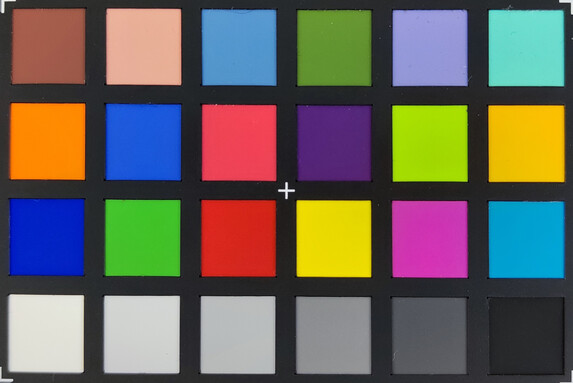

Accessories and Warranty – No Charger Included
In the Xiaomi 12X’s box we found the phone itself, a USB cable, a SIM tool, and a transparent protective case. And while the 12X supports fast charging with up to 67 W you might notice that a charger is suspiciously missing. It is, however, included with the more expensive Xiaomi 12 and 12 Pro. Xiaomi does not offer any accessories made specifically for their smartphones.
By default, Xiaomi smartphones come with a 12 month manufacturer warranty.
Input Devices and Handling – 60 Hz or 120 Hz Refresh Rate
The Xiaomi 12X’s display is very similar to its more expensive and larger siblings. Like the Xiaomi 12 and the Xiaomi 12 Pro it features a 120 Hz AMOLED display with a sampling rate of 480 Hz resulting in a very smooth, instantaneous, and highly accurate everyday user experience with minimal finger resistance on the screen. With that said the overall experience is thwarted somewhat by the default screen protector as its edges produce a very rough transition between the protective film and the display itself.
As noted above our imported review unit came with three different Chinese-layout keyboards preloaded. If you are like us and do seldom or never write Chinese you may want to consider installing a third-party keyboard, such as for example Google’s own Gboard, from the Play Store.
Biometric security features include an optical fingerprint reader as well as a 2D face detection. The former is hidden underneath the display and works very reliable and fast. The 2D face detection requires sufficient amounts of ambient light, and it worked similarly well under these circumstances.
Display – Over 1,000 Nits Peak Brightness
The Xiaomi 12X’s 6.28-inch AMOLED display runs at a native resolution of 2400 x 1080 resulting in a pixel density of 449 PPI. The display will switch automatically between 60 and 120 Hz refresh rate depending on display contents, and it supports manual pinning to either of those two settings. Furthermore, it supports HDR+ and Dolby Vision.
On paper, the AMOLED display is supposed to achieve a peak brightness of 1,100 nits. Unfortunately, we were not able to reach those levels of brightness in our tests, although we did get very close. In the APL50 test, which features an evenly distributed bright-dark pattern, it reached a maximum of 1,008 nits, and a slightly lower 908.4 nits when displaying an all-white image. With disabled ambient light sensor, the display peaks at just 506 nits, and the lowest possible brightness setting is 1.83 nits.
As all OLED displays do the Xiaomi 12X’s AMOLED display uses PMW for brightness regulation. According to our tests, the PWM frequency varies between 451.5 and 523 Hz at a brightness level of 42 % and below. Above that we found PWM frequencies of 60 or 120 Hz, depending on the display’s applied refresh rate.
| |||||||||||||||||||||||||
Brightness Distribution: 97 %
Center on Battery: 910 cd/m²
Contrast: ∞:1 (Black: 0 cd/m²)
ΔE ColorChecker Calman: 0.8 | ∀{0.5-29.43 Ø4.78}
ΔE Greyscale Calman: 1.3 | ∀{0.09-98 Ø5}
98.6% sRGB (Calman 2D)
Gamma: 2.25
CCT: 6414 K
| Xiaomi 12X OLED, 2400x1080, 6.3" | Motorola Moto G200 5G IPS LCD, 2460x1080, 6.8" | OnePlus Nord 2 5G AMOLED, 2400x1080, 6.4" | Realme GT Neo 2 AMOLED, 2400x1080, 6.6" | Samsung Galaxy A52s 5G AMOLED, 2400x1080, 6.5" | Xiaomi Poco F3 AMOLED, 2400x1080, 6.7" | |
|---|---|---|---|---|---|---|
| Screen | -140% | -128% | -189% | -81% | -4% | |
| Brightness middle (cd/m²) | 910 | 512 -44% | 594 -35% | 767 -16% | 736 -19% | 889 -2% |
| Brightness (cd/m²) | 908 | 488 -46% | 594 -35% | 767 -16% | 751 -17% | 902 -1% |
| Brightness Distribution (%) | 97 | 87 -10% | 99 2% | 97 0% | 96 -1% | 95 -2% |
| Black Level * (cd/m²) | 0.36 | |||||
| Colorchecker dE 2000 * | 0.8 | 3.42 -328% | 2.74 -243% | 3.47 -334% | 2.18 -173% | 0.9 -13% |
| Colorchecker dE 2000 max. * | 1.8 | 5.9 -228% | 6 -233% | 9.23 -413% | 5.69 -216% | 1.9 -6% |
| Greyscale dE 2000 * | 1.3 | 3.7 -185% | 4.2 -223% | 5.9 -354% | 2.1 -62% | 1.3 -0% |
| Gamma | 2.25 98% | 7154 0% | 2.278 97% | 2.275 97% | 2.27 97% | 2.26 97% |
| CCT | 6414 101% | 1.944 334362% | 7322 89% | 7800 83% | 6563 99% | 6614 98% |
| Contrast (:1) | 1422 |
* ... smaller is better
Screen Flickering / PWM (Pulse-Width Modulation)
| Screen flickering / PWM detected | 523 Hz | ||
The display backlight flickers at 523 Hz (worst case, e.g., utilizing PWM) . The frequency of 523 Hz is quite high, so most users sensitive to PWM should not notice any flickering. In comparison: 53 % of all tested devices do not use PWM to dim the display. If PWM was detected, an average of 8108 (minimum: 5 - maximum: 343500) Hz was measured. | |||
Three pre-defined display modes are supported: Vivid, Saturated, and Original. We found the “Original” mode to produce the most natural color representation in the sRGB color space with colors, color temperatures, and RGB balance within their respective ideal range.
Display Response Times
| ↔ Response Time Black to White | ||
|---|---|---|
| 1.204 ms ... rise ↗ and fall ↘ combined | ↗ 0.584 ms rise | |
| ↘ 0.62 ms fall | ||
| The screen shows very fast response rates in our tests and should be very well suited for fast-paced gaming. In comparison, all tested devices range from 0.1 (minimum) to 240 (maximum) ms. » 5 % of all devices are better. This means that the measured response time is better than the average of all tested devices (20.2 ms). | ||
| ↔ Response Time 50% Grey to 80% Grey | ||
| 0.777 ms ... rise ↗ and fall ↘ combined | ↗ 0.385 ms rise | |
| ↘ 0.392 ms fall | ||
| The screen shows very fast response rates in our tests and should be very well suited for fast-paced gaming. In comparison, all tested devices range from 0.165 (minimum) to 636 (maximum) ms. » 2 % of all devices are better. This means that the measured response time is better than the average of all tested devices (31.6 ms). | ||
Performance – Powerful Thanks to Snapdragon 870
The Xiaomi 12X is powered by a Snapdragon 870 SoC with either 8 or 12 GB of LPDDR5 RAM accompanied by an Adreno 650 GPU.
The lesser equipped SKU performed at high-end levels of the spectrum already, and it turned out to be more than fast enough for everyday tasks and challenges. Nevertheless, we found that the Snapdragon 870 is held back slightly as its GFXBench off-screen results were significantly lower than on other smartphones equipped with the same SoC.
The 128 or 256 GB large UFS 3.1 storage is blazingly fast and offers very high sequential read speeds for short load times.
| AImark - Score v2.x | |
| Motorola Moto G200 5G | |
| Samsung Galaxy A52s 5G | |
| Xiaomi 12X | |
| Average Qualcomm Snapdragon 870 5G (111838 - 123847, n=9) | |
| Xiaomi Poco F3 | |
| OnePlus Nord 2 5G | |
| Jetstream 2 - 2.0 Total Score | |
| Average of class Smartphone (23.8 - 387, n=153, last 2 years) | |
| Xiaomi 12X (Chrome 98.0.4758.101) | |
| Average Qualcomm Snapdragon 870 5G (60.7 - 108.3, n=12) | |
| Motorola Moto G200 5G (Chrome97) | |
| Xiaomi Poco F3 (Chrome 90) | |
| Samsung Galaxy A52s 5G (Chrome 93) | |
| OnePlus Nord 2 5G (Chrome 92) | |
| JetStream 1.1 - Total Score | |
| Xiaomi 12X (Chrome 98.0.4758.101) | |
| Average Qualcomm Snapdragon 870 5G (105.1 - 184.5, n=9) | |
| Samsung Galaxy A52s 5G (Chrome 93) | |
| OnePlus Nord 2 5G (Chrome 92) | |
| Motorola Moto G200 5G (Chrome97) | |
| Xiaomi Poco F3 (Chrome 90) | |
| Speedometer 2.0 - Result 2.0 | |
| Average of class Smartphone (15.2 - 643, n=126, last 2 years) | |
| Motorola Moto G200 5G (Chrome97) | |
| Xiaomi Poco F3 (Chrome 90) | |
| Xiaomi 12X (Chrome 98.0.4758.101) | |
| Average Qualcomm Snapdragon 870 5G (51.4 - 77, n=12) | |
| Samsung Galaxy A52s 5G (Chome 93) | |
| OnePlus Nord 2 5G (Chome 92) | |
| WebXPRT 3 - Overall | |
| Average of class Smartphone (38 - 380, n=34, last 2 years) | |
| Xiaomi 12X (Chrome 98.0.4758.101) | |
| Motorola Moto G200 5G (Chrome97) | |
| Average Qualcomm Snapdragon 870 5G (94 - 155, n=13) | |
| Xiaomi Poco F3 (Chrome 90) | |
| Samsung Galaxy A52s 5G (Chrome 93) | |
| OnePlus Nord 2 5G (Chrome 92) | |
| Octane V2 - Total Score | |
| Average of class Smartphone (2228 - 121337, n=201, last 2 years) | |
| Xiaomi 12X (Chrome 98.0.4758.101) | |
| Average Qualcomm Snapdragon 870 5G (20543 - 41256, n=13) | |
| Motorola Moto G200 5G (Chrome97) | |
| Xiaomi Poco F3 (Chrome 90) | |
| OnePlus Nord 2 5G (Chrome 92) | |
| Samsung Galaxy A52s 5G (Chrome 93) | |
| Mozilla Kraken 1.1 - Total | |
| OnePlus Nord 2 5G (Chrome 92) | |
| Samsung Galaxy A52s 5G (Chrome 93) | |
| Xiaomi Poco F3 (Chrome 90) | |
| Average Qualcomm Snapdragon 870 5G (1055 - 1792, n=13) | |
| Motorola Moto G200 5G (Chrome97) | |
| Average of class Smartphone (257 - 28190, n=156, last 2 years) | |
| Xiaomi 12X (Chrome 98.0.4758.101) | |
* ... smaller is better
| Xiaomi 12X | Motorola Moto G200 5G | OnePlus Nord 2 5G | Realme GT Neo 2 | Samsung Galaxy A52s 5G | Xiaomi Poco F3 | Average 256 GB UFS 3.1 Flash | Average of class Smartphone | |
|---|---|---|---|---|---|---|---|---|
| AndroBench 3-5 | -8% | 6% | -3% | -39% | -26% | 16% | 46% | |
| Sequential Read 256KB (MB/s) | 1732 | 1898 10% | 1827 5% | 1761 2% | 951 -45% | 1378 -20% | 1757 ? 1% | 2226 ? 29% |
| Sequential Write 256KB (MB/s) | 795 | 712 -10% | 1256 58% | 763 -4% | 486.5 -39% | 684 -14% | 1204 ? 51% | 1848 ? 132% |
| Random Read 4KB (MB/s) | 291.9 | 155.9 -47% | 223.7 -23% | 281.1 -4% | 168.2 -42% | 208 -29% | 287 ? -2% | 295 ? 1% |
| Random Write 4KB (MB/s) | 279.9 | 322.5 15% | 239 -15% | 260.2 -7% | 192.5 -31% | 170.6 -39% | 318 ? 14% | 335 ? 20% |
Gaming – 120 FPS are the Exception
Thanks to its Adreno 650 GPU the Xiaomi 12X performed very well overall in the gaming category. Current games, such as Asphalt 9: Legends, will run smoothly without necessitating reduced details. Its high 120 Hz refresh rate will, however, only be of any real gaming use when running less demanding games, such as Armajet which managed to achieve slightly over 85 FPS. Asphalt 9: Legends still managed a very smooth and consistent 60 FPS.
All frame rates were recorded using Gamebench.
Emissions – Full Steam Ahead Most of the Time
Temperature
In everyday use the Xiaomi 12X remained pleasantly cool, and it did not break a sweat even during our one-hour long stress test with just 33.8 °C peak surface temperature.
The Snapdragon 870 does not suffer from thermal throttling and ran at its full speed even after 30 loops of the GFXBench stress test running T-Rex and Manhattan. With that said we did notice some performance throttling when running the 3DMark Wild Life stress test that could in theory have real-world implications.
(+) The maximum temperature on the upper side is 33.8 °C / 93 F, compared to the average of 35.2 °C / 95 F, ranging from 21.9 to 247 °C for the class Smartphone.
(+) The bottom heats up to a maximum of 33.5 °C / 92 F, compared to the average of 34 °C / 93 F
(+) In idle usage, the average temperature for the upper side is 29.6 °C / 85 F, compared to the device average of 32.9 °C / 91 F.
3DMark Wild Life Stress Test
| 3DMark | |
| Wild Life Stress Test Stability | |
| Samsung Galaxy A52s 5G | |
| Xiaomi Poco F3 | |
| Motorola Moto G200 5G | |
| Xiaomi 12X | |
| OnePlus Nord 2 5G | |
| Wild Life Extreme Stress Test | |
| Samsung Galaxy A52s 5G | |
| Xiaomi Poco F3 | |
| Motorola Moto G200 5G | |
| Xiaomi 12X | |
| OnePlus Nord 2 5G | |
Speaker
Inside the Xiaomi 12X we find a set of Harman Kardon stereo speakers located at the top and bottom of the device. Its soundscape was decent overall, with well-balanced mids and highs. As is common for smartphones we found their bass to be lacking resulting in a slightly tinny overall note. On the plus side we found no distortions whatsoever at maximum volume.
Headphones can be connected either via USB-C or Bluetooth 5.1, and the device supports various high-definition audio codecs such as AAC, LDAC, or LHDC.
Xiaomi 12X audio analysis
(+) | speakers can play relatively loud (90.1 dB)
Bass 100 - 315 Hz
(-) | nearly no bass - on average 23% lower than median
(±) | linearity of bass is average (8.2% delta to prev. frequency)
Mids 400 - 2000 Hz
(+) | balanced mids - only 4.1% away from median
(+) | mids are linear (4% delta to prev. frequency)
Highs 2 - 16 kHz
(+) | balanced highs - only 4.5% away from median
(+) | highs are linear (4.8% delta to prev. frequency)
Overall 100 - 16.000 Hz
(±) | linearity of overall sound is average (16.1% difference to median)
Compared to same class
» 5% of all tested devices in this class were better, 4% similar, 90% worse
» The best had a delta of 11%, average was 35%, worst was 134%
Compared to all devices tested
» 25% of all tested devices were better, 5% similar, 70% worse
» The best had a delta of 4%, average was 24%, worst was 134%
Motorola Moto G200 5G audio analysis
(±) | speaker loudness is average but good (81.2 dB)
Bass 100 - 315 Hz
(-) | nearly no bass - on average 25% lower than median
(±) | linearity of bass is average (10.8% delta to prev. frequency)
Mids 400 - 2000 Hz
(±) | higher mids - on average 5.4% higher than median
(+) | mids are linear (6.2% delta to prev. frequency)
Highs 2 - 16 kHz
(+) | balanced highs - only 3.9% away from median
(+) | highs are linear (3.8% delta to prev. frequency)
Overall 100 - 16.000 Hz
(±) | linearity of overall sound is average (19.8% difference to median)
Compared to same class
» 31% of all tested devices in this class were better, 8% similar, 61% worse
» The best had a delta of 11%, average was 35%, worst was 134%
Compared to all devices tested
» 50% of all tested devices were better, 7% similar, 43% worse
» The best had a delta of 4%, average was 24%, worst was 134%
Battery Life – Fast Charging in just 50 Minutes
Power Consumption
Overall power consumption is inconspicuous albeit slightly higher than similarly equipped competitors such as the Motorola Moto G200 5G or the Samsung Galaxy A52s 5G.
The Xiaomi 12X supports fast charging with up to 67 W. However, unlike the Xiaomi 12, the Xiaomi 12X does not come with a charger by default. Should you be able to get your hands on a compatible one the results are astonishing. In our tests using Xiaomi 12’s 67 W power supply charging the Xiaomi 12X from near empty to full took just 48 minutes. As both wireless charging and reverse wireless charging require either the Xiaomi 12 or Xiaomi 12 Pro the Xiaomi 12X is the ugly duckling of the 12-series in this regard.
| Off / Standby | |
| Idle | |
| Load |
|
Key:
min: | |
| Xiaomi 12X 4500 mAh | Motorola Moto G200 5G 5000 mAh | OnePlus Nord 2 5G 4500 mAh | Samsung Galaxy A52s 5G 4500 mAh | Xiaomi Poco F3 4520 mAh | Average Qualcomm Snapdragon 870 5G | Average of class Smartphone | |
|---|---|---|---|---|---|---|---|
| Power Consumption | 12% | 1% | 5% | 12% | -30% | -8% | |
| Idle Minimum * (Watt) | 0.75 | 0.6 20% | 0.8 -7% | 1.2 -60% | 0.76 -1% | 1.23 ? -64% | 0.848 ? -13% |
| Idle Average * (Watt) | 1.88 | 0.9 52% | 1.2 36% | 1.4 26% | 1.29 31% | 2.17 ? -15% | 1.434 ? 24% |
| Idle Maximum * (Watt) | 1.94 | 1.5 23% | 1.6 18% | 1.7 12% | 1.45 25% | 2.49 ? -28% | 1.618 ? 17% |
| Load Average * (Watt) | 4.99 | 7 -40% | 5.7 -14% | 3.6 28% | 4.6 8% | 6.39 ? -28% | 7.01 ? -40% |
| Load Maximum * (Watt) | 8.66 | 8.4 3% | 10.9 -26% | 6.9 20% | 8.87 -2% | 9.94 ? -15% | 11.3 ? -30% |
* ... smaller is better
Power Consumption: Geekbench (150 cd/m²)
Power Consumption: GFXBench (150 cd/m²)
Battery Life
Thanks to its large 4,500 mAh battery the Xiaomi 12X offers a surprisingly long battery life. In our Wi-Fi test browsing the web it lasted for a good 17 hours, and video playback was possible for an even longer 23 hours. Even heavy users should easily get through an entire day with the Xiaomi 12X, and light users might even be able to squeeze two or more days of use out of it.
| Xiaomi 12X 4500 mAh | Motorola Moto G200 5G 5000 mAh | OnePlus Nord 2 5G 4500 mAh | Realme GT Neo 2 5000 mAh | Samsung Galaxy A52s 5G 4500 mAh | Xiaomi Poco F3 4520 mAh | |
|---|---|---|---|---|---|---|
| Battery runtime | -2% | -13% | -6% | -16% | -20% | |
| Reader / Idle (h) | 35.3 | 44.9 27% | 32.1 -9% | 31.6 -10% | 26 -26% | |
| H.264 (h) | 23 | 25 9% | 18.8 -18% | 18.5 -20% | 15.3 -33% | |
| WiFi v1.3 (h) | 17.1 | 15.1 -12% | 16 -6% | 16 -6% | 12 -30% | 13.4 -22% |
| Load (h) | 5.4 | 3.8 -30% | 4.5 -17% | 5.2 -4% | 5.5 2% |
Pros
Cons
Verdict Xiaomi 12X
The Xiaomi 12X is a very good smartphone with a sleek design, a bright 120 Hz AMOLED display, a powerful SoC, a good GPS modem, and long battery life.
It is aimed primarily at users looking for a powerful yet compact smartphone. And unlike many other smartphones it is capable of delivering that high level of performance for a very long time, albeit with some caveats (see GFXBench above), thanks to its good and efficient cooling system.
The Xiaomi 12X is a very fast mid-range smartphone with a compact 6.28-inch display, and it is surprisingly close to the more expensive Xiaomi 12.
Not all that glitters is gold though, and we found a few cons. For example, the USB port is connected to a slow USB 2.0 bus and its IP certification is as absent as the charger in the box. The lack of LTE band 20 support that we noticed is not on this list considering that the Xiaomi 12X global edition is unaffected by this limitation.
Alternatives are the similarly compact and affordable OnePlus Nord 2 5G or the Xiaomi 12. The latter features the same design language as the Xiaomi 12X but comes with a faster Snapdragon 8 Gen 1 SoC as well as support for wireless charging with up to 50 W.
Price and Availability
Like all Xiaomi devices the device is not sold directly in North America. It can, however, be purchased through import shops such as Trading Shenzhen or US resellers such as this one on eBay. Prices vary between $600 and $1,000.
Xiaomi 12X
- 08/30/2022 v7 (old)
Manuel Masiero




